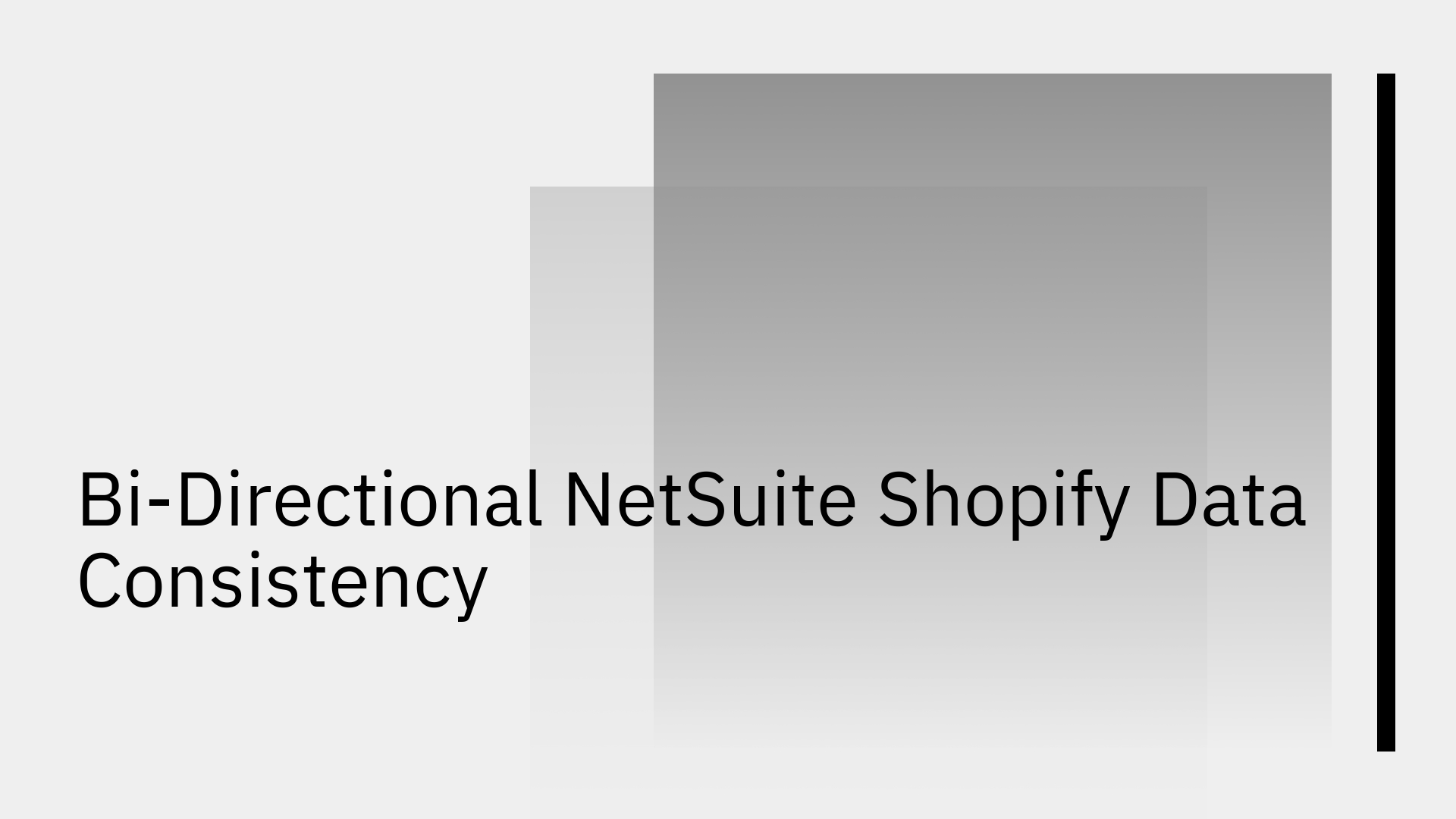
For e-commerce businesses, maintaining data consistency between a Shopify storefront and a NetSuite ERP backend is a critical operational challenge. When these systems are disconnected, it can create operational bottlenecks, lead to poor customer experiences, and corrupt financial reporting. The definitive solution is bi-directional, real-time synchronization, which ensures your data is always accurate and up-to-date across both platforms.
Bi-directional, or two-way, synchronization is a process where data flows in both directions between two systems. When a change happens in one system, it is automatically and instantly reflected in the other. For instance, when an inventory level is updated in NetSuite, the stock count on the corresponding Shopify product page changes immediately. Likewise, a new order placed on Shopify is instantly created as a sales order in NetSuite. This process eliminates manual data entry and drastically reduces the risk of human error [1].
Poor integration between core business systems can lead to significant financial and operational losses. Common challenges like data discrepancies and the need for manual reconciliation processes waste valuable resources. In fact, many mid-market retailers struggle with integration issues that result in wasted staff hours and lost revenue [2]. The benefits of a proper Shopify NetSuite integration are clear: improved inventory accuracy, faster order fulfillment, and unified customer data.
To maintain operational integrity, several key data points must be synced between NetSuite and Shopify. A robust two-way sync architecture ensures these essential data flows are always consistent [3].
Businesses have several methods to connect NetSuite with Shopify, each with distinct trade-offs in terms of cost, flexibility, and reliability.
These are pre-built applications found on the Shopify App Store that offer a seemingly simple solution.
This approach involves building a bespoke integration from scratch using an internal or external development team.
An iPaaS offers a modern, scalable solution that combines the ease of pre-built connectors with the power of a custom build. Platforms like Stacksync provide robust, enterprise-grade connectors with the flexibility to handle complex business logic. Key features include real-time synchronization, advanced error handling, and intelligent management of API rate limits. Our purpose-built Stacksync connectors power this real-time sync without the overhead and complexity of custom development.
Stacksync provides the premier solution for bi-directional NetSuite and Shopify integration. An effective integration strategy is fundamental to unlocking growth by eliminating operational friction. Poor integration can cause significant financial loss due to missed sales opportunities and operational chaos [5]. Stacksync delivers an optimized two-way sync framework engineered specifically for the demands of modern digital commerce.
For a detailed walkthrough, see our comprehensive guide on setting up a two-way sync between Shopify and NetSuite using Stacksync.
Maintaining data consistency between NetSuite and Shopify is not a luxury—it is a necessity for growth and efficiency. While basic connectors are often insufficient for growing businesses and custom builds are too resource-intensive, an iPaaS solution offers the ideal balance. Stacksync provides the reliability, scalability, and real-time performance needed to streamline order management, enhance the customer experience, and build a truly connected e-commerce ecosystem. As experts note, seamless integration is a cornerstone of modern e-commerce growth [6].
Ready to eliminate data inconsistencies and unlock operational efficiency? Schedule a demo with a Stacksync cloud architect today and see how our platform can transform your e-commerce operations.